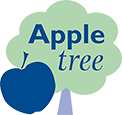What differences are there between blogging and micro-blogging?
Blogging and micro-blogging are both forms of social networking. Of course you?ve already sussed that micro-blogging is a shorter version of blogging, and it is, as a more concise, focused version.
Blogging allows you to express yourself in a chatty, conversationalist manner in as many words as you like. How long your posts are is open to contention and depends on what purpose you write your blog for, but I think they should not be over long. Blogs are newsy and should be aimed at your readers who don?t have a lot of time, and are looking for a quick fix to get their information or be entertained with knowledge that is in the ?now?. (Anything that is over 750 words could be termed as an article, especially if it is extreme in its technical language and the audience it is aimed at, and really should be allocated to online article directories.) Posts can also be controversial, argumentative, opinionated, poignant, show-stopping or thought-provoking. There is room for expression as well as pictures and other media such as videos and audio. They are also archived for researchers and for reference in the future, and posts are shared with your audience through subscription services and RSS to feed them into other social networking profiles or streams.
Micro-blogging is also known as Twitter. (It could also be considered as updating your social status fields in your social networking profiles, or chatting with your friends on msn or other communication methods.) The nature of this activity is that it is short, quick-fire, concise and limited to a small number of characters (Twitter is 140, on other social media it is more). Because you are constrained in what you can say, it is mostly in letter characters, and if you want to expand your thoughts you need to direct your readers through a (usually shortened) link to a blog post or Facebook fanpage or LinkedIn Group or whatever source you like. This is the same for other media such as pictures, video, audio, etc. But the main reason is to share information with an immediate audience as a real-time updating service, revelling in the concept of ?now? or otherwise it has gone, catching your audience as it passes through and hoping your contribution is suitable enough for them to share it with their followers.





